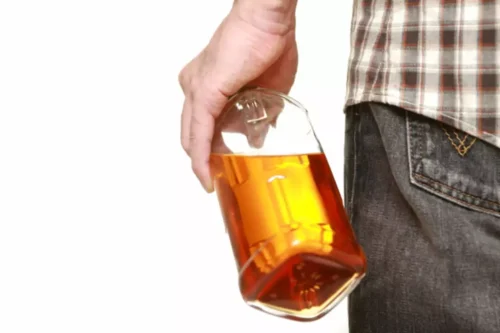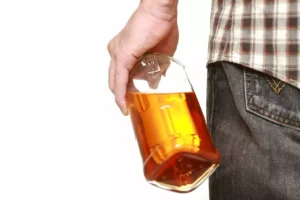
As you get older, you’re more likely to live with chronic pain and you may be more susceptible to depression. While either one of these conditions may make you want to pour yourself a drink, think twice before you do. A new advisory from United States Surgeon General Vivek Murthy, M.D., warns about the direct link between alcohol consumption and cancer. “That can include cognitive effects, sedative effects — like how you get sleepy with alcohol — effects on balance and coordination, raising your risk for falls,” Koncilja adds.
Understanding Alcoholic Nose: More Than Just Drinking

This chronic inflammation is caused by broken blood vessels and sores on or around the nose, causing it to appear red, swollen, and bumpy. Gin Blossom alcoholic nose nose is a term used to describe a red or swollen nose caused by excessive alcohol consumption over time. The name originates from the idea that heavy gin drinkers tend to develop this type of rosacea. This skin condition causes persistent redness and visible blood vessels on the face. The primary cause of an alcoholic nose is rhinophyma, a subtype of rosacea, a chronic skin condition characterized by facial redness and chronic inflammation. Rhinophyma typically develops in individuals with fair skin and a family history of rosacea.
Why Do Alcoholics Have a Red Nose?

Dermatological conditions (skin conditions) are one of the first visible signs of alcohol abuse. Skin reactions to alcohol can be the result of environmental factors, genetics, alcohol toxins, and interactions between medication and alcohol. When these vessels break, the skin becomes red and the blood becomes visible under the skin. Whilst women can be diagnosed with rhinophyma, an alcoholic nose is most common in men, those with a light skin tone, and those with a family history of rosacea. Although alcohol is not the direct cause, it can worsen rosacea symptoms by dilating blood vessels and increasing facial redness. Over time, this can contribute to the prominence of rhinophyma in individuals predisposed to the condition.

Alcohol Red Nose-Related Stigma
If you’re looking for information about the condition known as alcoholic nose or drinker’s nose, here are answers to alcoholism symptoms some of the most frequently asked questions. The association between alcohol abuse and rosacea can be traumatizing for some people with rosacea. Until recently, doctors believed that rosacea and rhinophyma could be caused by alcoholism. For more advanced forms of rhinophyma, the most effective way to manage thickened skin is almost exclusively through physically removing excess tissue. Sometimes, this can include relying on ablative lasers or electrical currents (a treatment known as diathermy) to help remove excess tissue.
Alcohol Red Nose: Does Drinking Alcohol Cause Rhinophyma?
Alcohol nose, or rhinophyma, is a condition that affects the skin of the nose, causing it to become red, swollen, and bulbous. This advanced stage of rosacea involves the thickening of nasal skin and the enlargement of pores, which can lead to a disfigured appearance. While the exact cause of rhinophyma is unknown, factors like chronic inflammation and the dilation of blood vessels contribute to its development. Rhinophyma is a condition that occurs when rosacea, a chronic skin disorder, spreads to the nose. Rosacea causes visibly red or swollen skin and sometimes bumps or acne-like conditions.
Alcoholic Nose Red Appearance, Alcohol Nose Pictures, Alcoholoism Now Signs & How to Treat an Alcoholic Nose?
Alcohol use disorder is known to trigger rosacea flare ups and worsen the appearance of the skin on the nose by dilating blood vessels and contributing to chronic inflammation. Heavy drinking can cause enlarged blood vessels, leading to the visible redness that characterizes the alcoholic nose. Many people assume that anyone with a red, bulbous nose must suffer from alcohol abuse. While drinking alcohol can aggravate certain skin conditions like rosacea, it is not the root cause of rhinophyma or the appearance of the nose. Many individuals who don’t drink excessively can still develop rhinophyma due to their genetics or a chronic skin condition.
- If you are suffering from rhinophyma, talk to your doctor or dermatologist to develop a plan for treatment.
- These complications may increase the likelihood of experiencing nosebleeds.
- Rosacea and rhinophyma can vary significantly in appearance and severity among individuals.
- An alcoholic nose, also known as Rhinophyma, has spider veins on the nose, possibly aided by and or worsened by heavy alcohol consumption.
- According to the World Health Organization, no level of alcohol consumption is considered safe.
Calcium helps keep them strong, but too much drinking prevents your bones from absorbing this essential mineral. “As you age, you get a higher blood alcohol concentration — what they measure on a breathalyzer — than a younger person who drank the same amount,” Koncilja says. Here are seven reasons why doctors and public health experts say age and alcohol don’t mix. Many alcoholic beverages contain histamines and sulfites that can trigger reactions in those who might be sensitive to them. If you are struggling to manage the symptoms, talk to a GP or therapist about your condition. Doctors and medical professionals will advise you to cut back or cut out alcohol to prevent the condition from getting worse.

Rhinophyma causes the skin on the nose to thicken and the sebaceous (oil) glands to enlarge. For some individuals with alcohol addiction, enrolling in a treatment program outside their local community can be more effective. This way, they are not inundated with negative social forces and stigma near home. This permits drinking triggers to lapse while improving their chances of clinging to an alcohol sobriety and recovery program. Not all heavy drinkers will develop a Gin Blossom nose, and not everyone with a red or swollen nose is a heavy drinker. Other factors, such as genetics, sun exposure, and certain medical conditions, can also contribute to the development of rosacea.
Our alcohol treatment programs incorporate evidence-based therapies, individual and group counseling, relapse prevention planning, and holistic wellness practices. We are committed to helping individuals achieve lasting recovery and build a healthy, fulfilling life. While alcohol nose does not directly imply addiction, it can be a visible manifestation of long-term alcohol abuse for some people. If you or someone you know struggles with alcohol addiction, The Hope House can help. Contact Zinnia Health today to learn more about our alcohol addiction treatment programs.
Change Your Life Today.
Before attempting to use antihistamines to fight back against facial flushing, make sure to speak with your healthcare provider to make sure you are doing so safely. Drinking water before, during, and after consuming alcohol can do wonders to help your body metabolize alcohol more effectively. A rule of thumb is to drink at least one glass of water for every alcoholic drink you consume. Have you ever noticed your face turning a tinge of red after just one or two drinks? Maybe you’ve seen this happen to a friend or family member who suddenly seems rosy after drinking.
